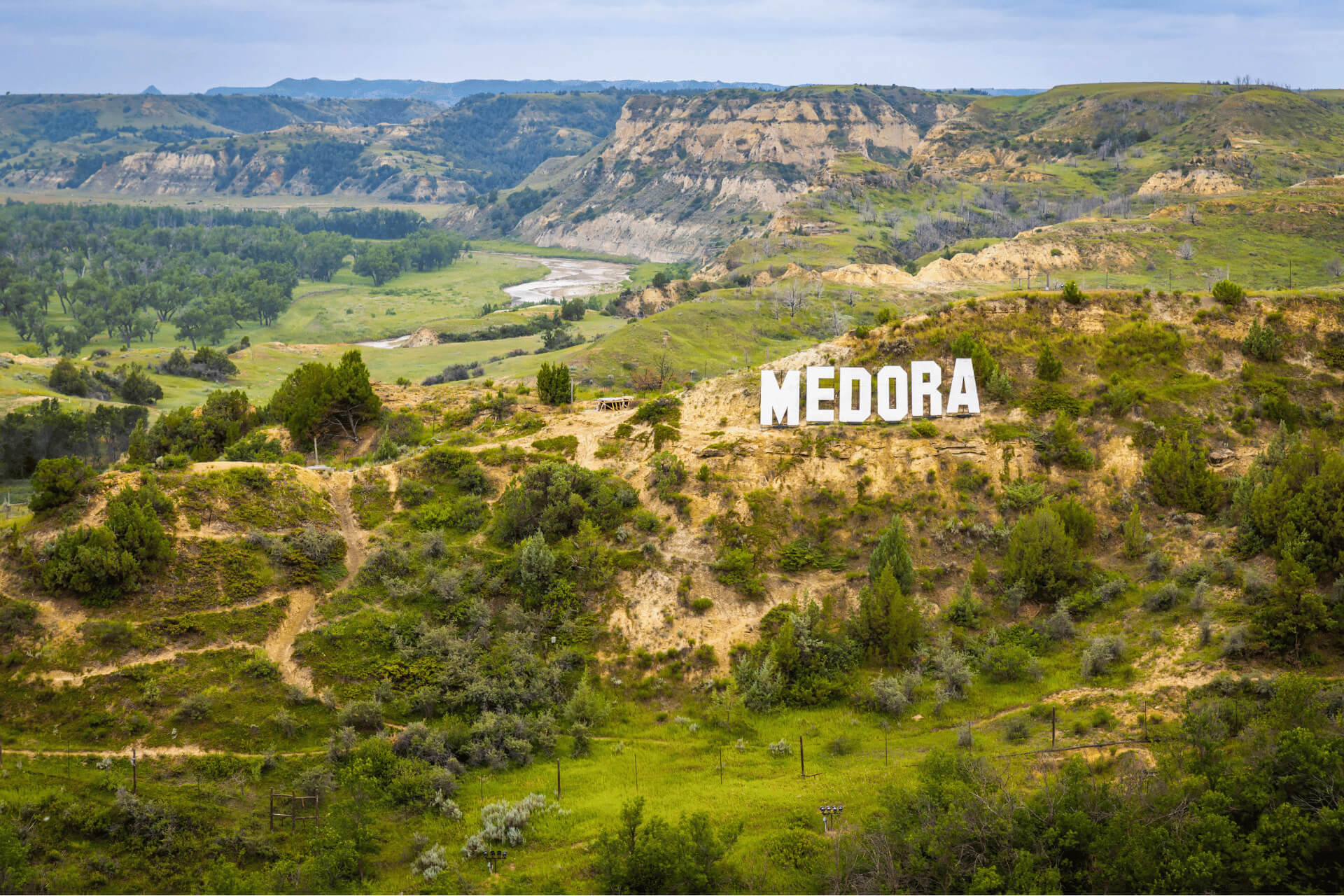Blog Navigation: Business Insights and Spotlights | Chamber Blog
09.20.25
Bridging East and West: Lessons from The Chamber’s Annual Tour
By Katherine Grindberg, Executive Vice President, FMWF Chamber

From workforce pipelines to civic engagement, here are the lessons from The Chamber's East Meets West Tour that are worth carrying forward.
What can Fargo-Moorhead-West Fargo area leaders learn from their counterparts across the state? How are western communities tackling the same workforce, child care and infrastructure challenges we face here? And what new ideas can help businesses and policymakers alike think differently about the future?
These were the guiding questions behind The Chamber’s third annual East Meets West Tour, when 20 local leaders spent two days in Dickinson and Medora exploring opportunities to strengthen relationships, share perspectives and uncover strategies that work across regions.
The trip’s true value wasn’t in the miles traveled, but in the lessons learned. From workforce pipelines to civic engagement, here are the lessons worth carrying forward for any business or community leader.
A special thank you to our sponsors who made this trip possible: Cardinal IG, Moore Engineering, ONEOK, ROERS, Bell Bank, Christianson Companies, Great States Construction and RDO.
Takeaways Worth Carrying Forward
This trip went far beyond a tour itinerary. Each western community, leader and industry sparked conversations and revealed lessons that impact our state’s shared future.
Here are some of the most powerful takeaways:
Communities that invest in people and place keep their talent.
Dickinson Mayor Scott Decker outlined housing, child care and behavioral health as top concerns – issues that mirror those in Cass County. His city has shifted from exporting talent to retaining it by investing in quality-of-life projects like Legacy Square, education initiatives and infrastructure upgrades. The lesson? Talent retention depends on community investment, a theme relevant to communities across the state.
Career and Technical Education (CTE) prepares students and strengthens our workforce.
At the Southwest Area CTE Academy, serving 1,100 students from seven schools, we saw how intentional industry partnerships are preparing students for the future of work. With strong work-based learning models and intentional industry engagement, the academy highlights how CTE can directly align education with employer needs.
Policy is stronger when every voice is at the table.
Lunch with nine western legislators turned into a candid dialogue on property taxes, energy policy, agriculture and water. Both sides benefited – our delegation better understood the west’s priorities, while legislators learned from east side perspectives. It was a reminder that policy solutions work best when informed by diverse regional voices.
When industries work together, communities win.
A panel of local farmers and ranchers shared how agriculture and energy – once viewed as competing industries – are now finding ways to complement one another. Their call for inquisitive leadership on animal agriculture resonated with our group: progress happens when we ask questions and learn across sectors.
Innovation isn’t optional — it’s survival.
From an oil refinery transformed into a renewable diesel facility at Marathon Petroleum to a tour of Baker Boy’s automation strategies, North Dakota is modeling how legacy industries can adapt to market shifts and workforce realities. Similarly, an update on the WBI Energy Pipeline showed the scale and complexity of energy infrastructure and the need for industry support to move projects forward.
Bold community investments shape the next generation.
The upcoming Theodore Roosevelt Presidential Library, set to open July 4, 2026, will not only be a tourism asset but also an educational landmark, leveraging AI and technology in exhibits to inspire future generations. For North Dakota, it represents a bold investment in tourism, education and heritage.
Civic engagement is business leadership.
House Majority Leader Mike Lefor and Secretary of State Michael Howe both emphasized the need for business leaders to step into civic engagement. Secretary Howe urged our group to not be afraid of term limits but instead see them as an opportunity for more North Dakotans to shape the state’s future. His challenge to us: help cultivate the next generation of candidates from within our workforce. Civic engagement isn’t just a political responsibility – it’s a business imperative, ensuring the policies shaping our economy and communities reflect real-world experience.
What This Means for Our Business Community
This trip underscored the interconnectedness of North Dakota’s regions. Workforce, child care, energy, agriculture and infrastructure challenges don’t stop at county lines — and neither should solutions. For our members, the key lessons are clear:
- Collaboration across regions makes North Dakota stronger.
- Communities grow and talent is retained when leaders invest in people and place.
- Innovation and adaptability keep businesses competitive.
- Business leaders have the opportunity and responsibility to shape the future by engaging in policy discussions and encouraging employees to do the same.
Building on These Lessons
The conversations sparked in Dickinson and Medora don’t end there. They’ll continue in boardrooms, classrooms and policy discussions across North Dakota. As a Chamber member, you play a vital role in shaping this statewide conversation. Keep connecting, keep sharing and keep leading — because the future of North Dakota depends on leaders willing to bridge east and west.
We’re grateful to our sponsors and participants for making this year’s trip possible, and we look forward to strengthening the bridge between east and west for years to come.
Interested in attending next year’s East Meets West Tour? Contact Cale Dunwoody, Vice President of Public Policy, at cdunwoody@fmwfchamber.com
SHARE
More Stories
Upcoming Events
Subscribe to email newsletters
